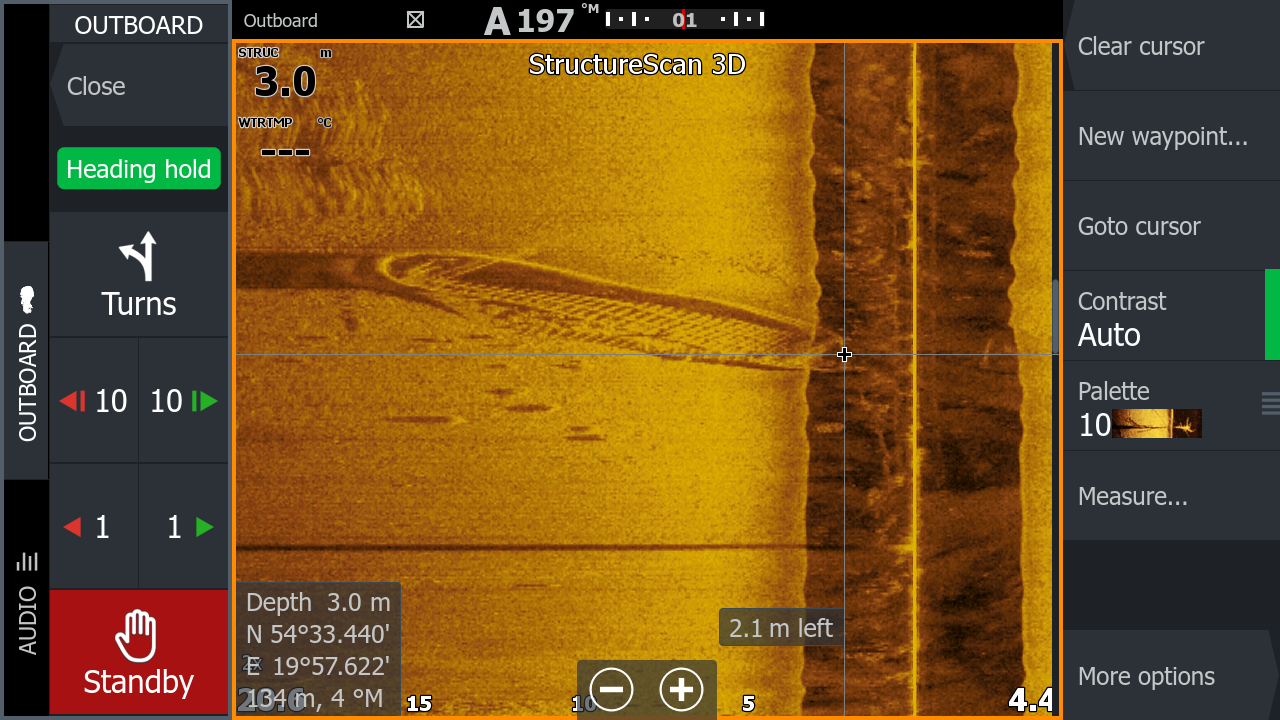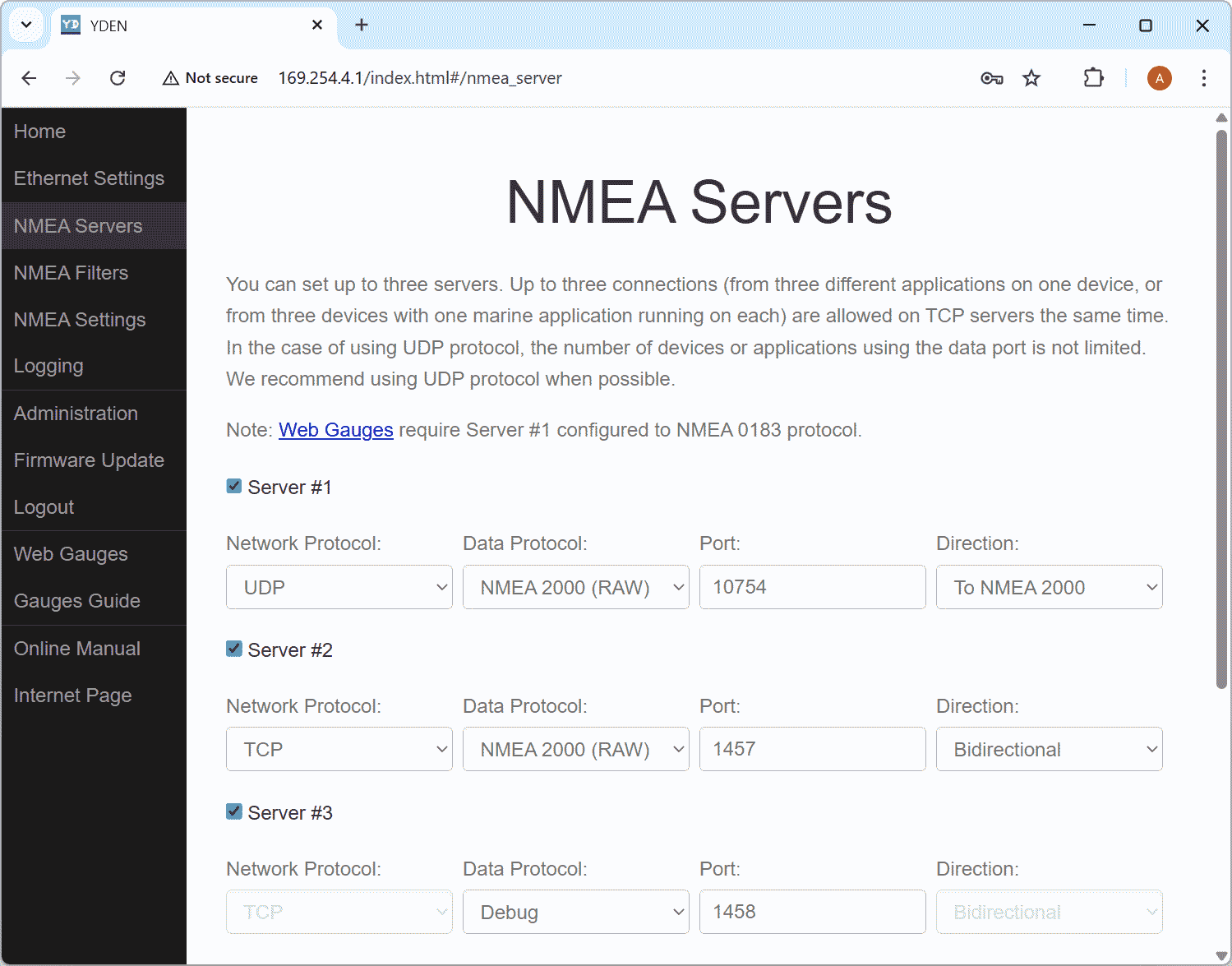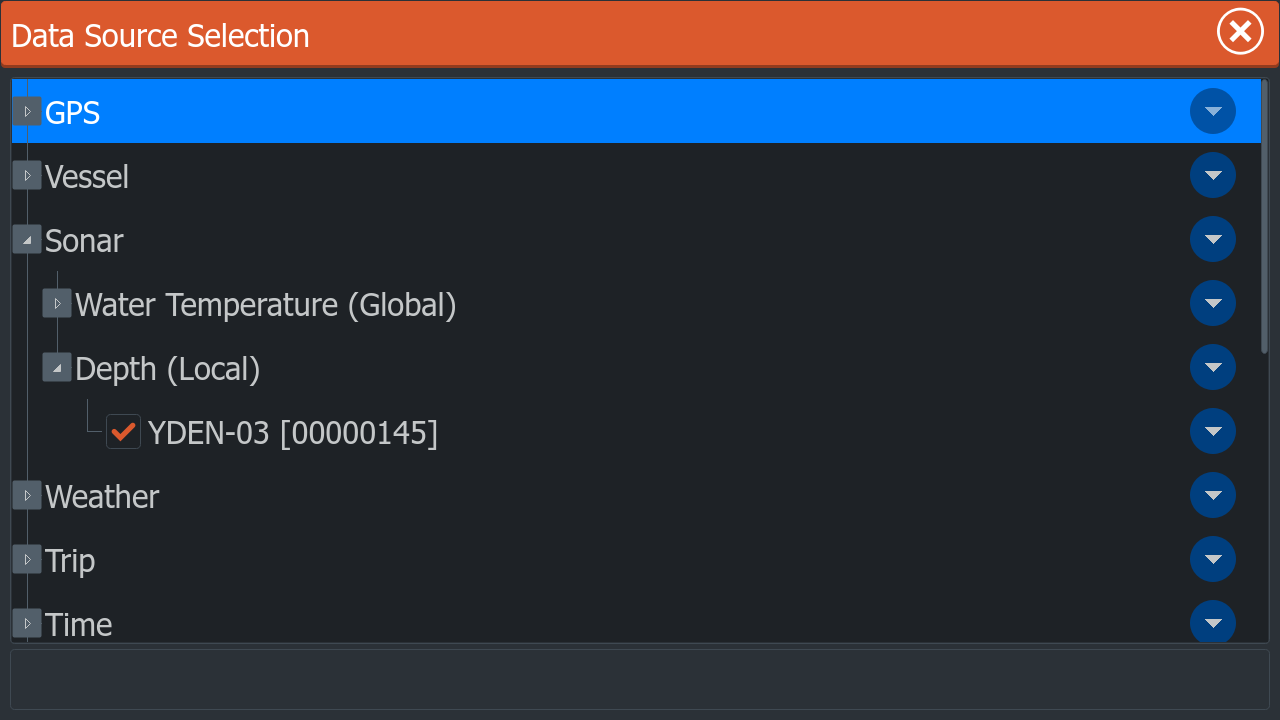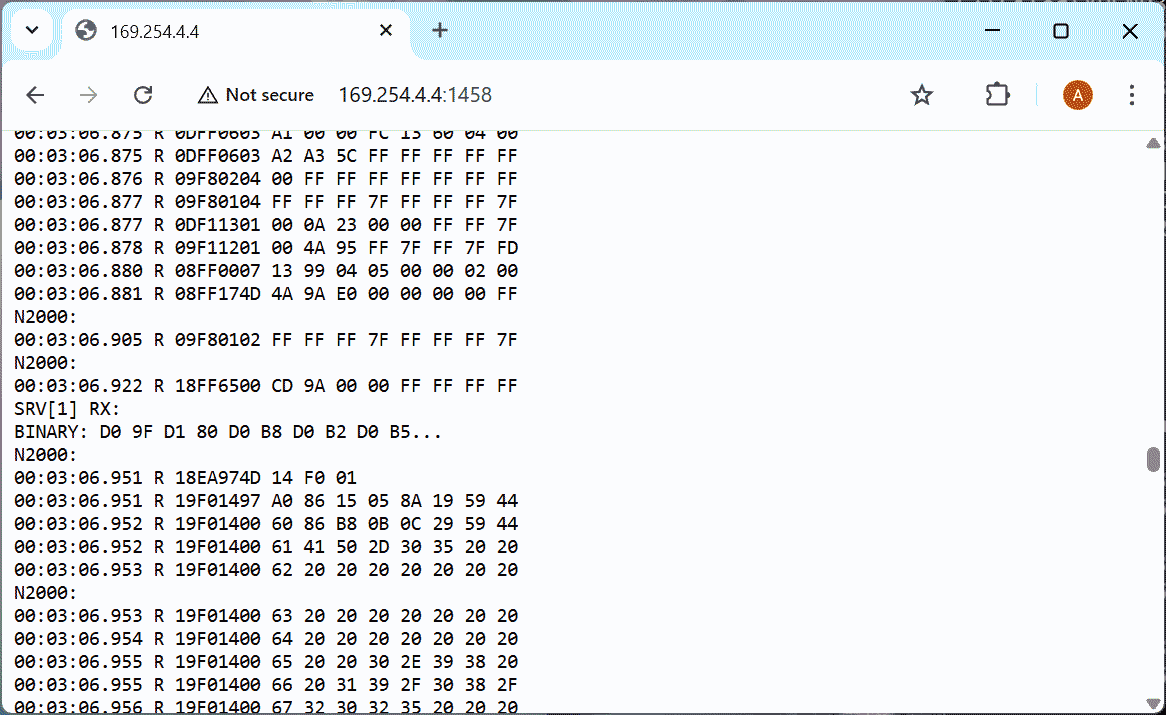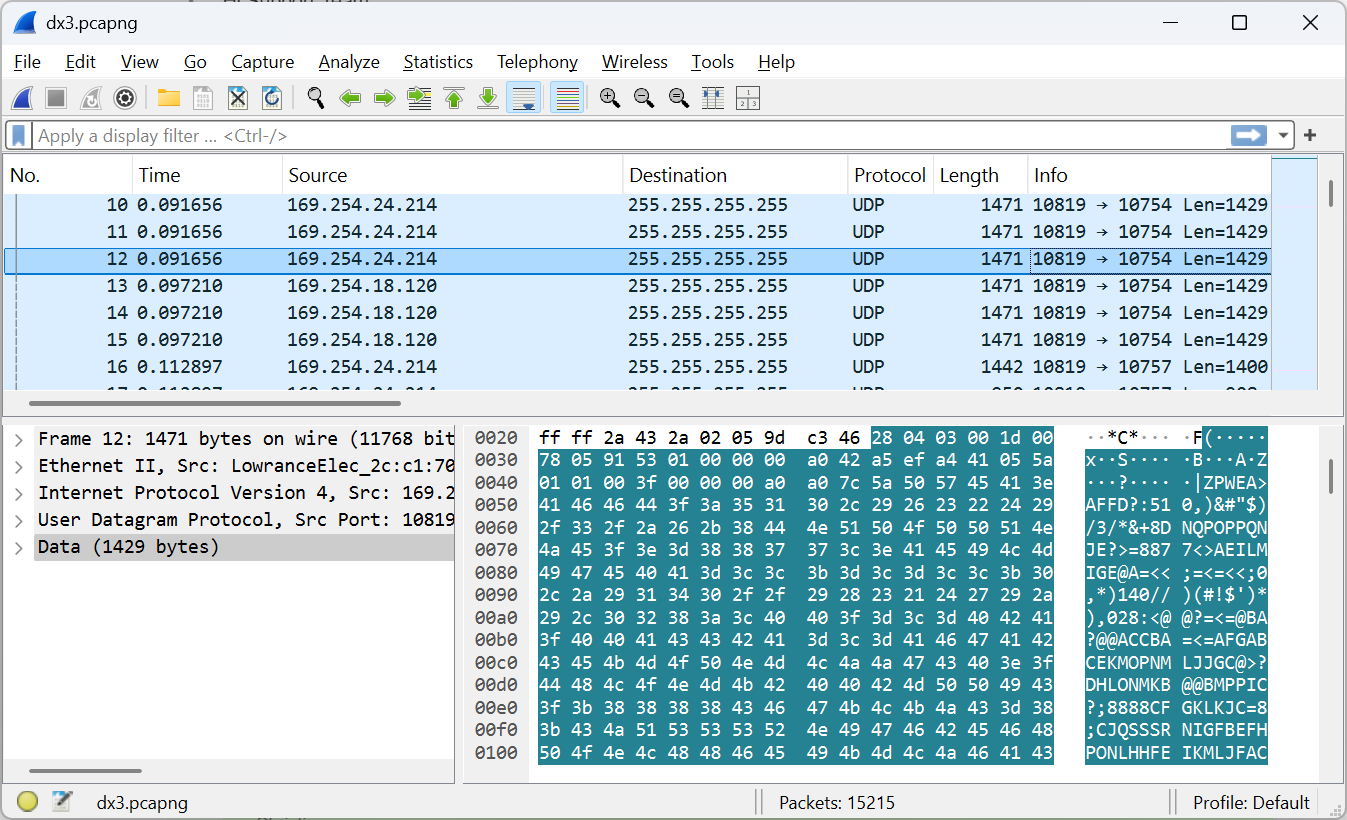September 9, 2025 Ethernet Gateway for Lowrance
With the new firmware supporting StructureScan 3D, your boat's hull may need one less hole.
Lowrance StructureScan 3D transducers provide excellent side-scanning and even build a 3D relief of the seabed. Naturally, they also show the depth under the boat, which can be displayed on Lowrance screens in the field called STRUC, as shown in the screenshot above.
Unfortunately, the MFD does not recognize this value as depth: it does not transmit it into the NMEA 2000 network from the high-speed Ethernet network, nor does it record it in tracks, and so on. This also makes it impossible to use the autopilot's depth-following mode, which is very useful when trolling.
Many users have encountered this problem, and they were usually advised to install another inexpensive sensor that transmits depth data to the NMEA 2000 network. But with the Ethernet Gateway YDEN-02, this can be avoided. Configure the first YDEN data server to UDP, RAW protocol, and port 10754. Please note that the data stream must be set to "To NMEA 2000", in order to prevent data from NMEA 2000 from entering the Ethernet network.
Change the Ethernet network settings by selecting the static address 169.254.4.1 and changing the subnet mask to 255.255.0.0. Now you can disconnect the Ethernet Gateway from your computer and connect it to the Lowrance high-speed network (to a free port on the sonar module or the plotter, whichever is more convenient) using the Lowrance cable 000-14552-001 or an equivalent.
After turning on the sonar, the depth should appear in the list of data sources on the plotter, as shown in the screenshot below.
This new feature has not yet undergone large-scale testing. Therefore, here's how to perform diagnostics if the StructureScan depth data (field STRUC) is present, but the depth data source has not appeared.
For this, you will also need to connect a laptop to the Ethernet network (using a simple RJ45 hub or another proprietary cable adapter). On the third YDEN server, enable the debugging protocol and open the link in a browser:
In the debug window, messages should appear with the header SRV[1] RX and the subheader BINARY. The first byte after the subheader should be 28 HEX (in the screenshot shown as D0).
The next step is to install the free software WireShark. In the list of packets, look for those with a length of 1429 bytes, and among them find those containing the first data byte 28 HEX (see screenshot).
In addition, in the new YDEN-02 firmware, the Web Gauges have been updated. Now they not only display all engine data but also show engine and transmission warnings. The list of measurement units for speed and fuel consumption has also been expanded.
Firmware update for Ethernet Gateway is available on the Downloads page.
Next articles:
- 10-year anniversary / May 12, 2025
- Raymarine, your turn! / February 17, 2025
- Python Gateway 1.05 Update / February 3, 2025
Previous articles:
- Latching buttons support / September 11, 2025
- Suzuki and Hyundai protocols / October 23, 2025
- Harley-Davidson Support / December 10, 2025
See also: recent news, all news...
